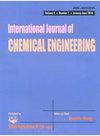Photocatalytic Performance Study of Organophosphorus-Doped Tungsten Trioxide and Composite Materials
IF 2.4
4区 工程技术
Q3 ENGINEERING, CHEMICAL
引用次数: 2
Abstract
The present study successfully produced a highly effective and stable organ phosphorus-doped tungsten trioxide (P-WO3) photocatalyst by a combination of hydrothermal and postcalcination methods. The crystallites, morphologies, and optical properties of the produced WO3 and P-WO3 crystals were investigated. The results indicated that P was consistently doped into the WO3 lattice in a pentavalent-oxidation state (P5+). Additionally, charge carrier traps capable of accepting photoelectrons were created. Additionally, the optical band gap was reduced from 2.4 to 2.33 eV. The degradation of methyl blue by photocatalysts was utilized to evaluate the photocatalytic performance of the synthesized P-WO3 samples at varied P concentrations (MB). The sample containing 6% -P-WO3 exhibited the best photocatalytic performance, degrading 96 percent of MB in 120 minutes, which was more than four times faster than the pure WO3 sample. The practicality of the synthesized P-WO3 was determined using samples from two residential wastewater treatment plants. When treating real wastewater with low organic matter concentrations, the P-WO3 demonstrated strong photodegradation performance. The creation of hydroxyl radicals (OH) and photography-created holes (h+) could be the key protagonists of photocatalytic activity in the P-WO3.有机磷掺杂三氧化钨及其复合材料的光催化性能研究
本研究通过水热与煅烧相结合的方法成功制备了一种高效稳定的器官掺磷三氧化钨(P-WO3)光催化剂。对制备的WO3和P-WO3晶体的晶型、形貌和光学性质进行了研究。结果表明,P以五价氧化态(P5+)连续掺杂到WO3晶格中。此外,还创造了能够接受光电子的电荷载流子陷阱。光学带隙从2.4 eV减小到2.33 eV。通过光催化剂对甲基蓝的降解,评价了合成的P- wo3样品在不同磷浓度(MB)下的光催化性能。含有6% -P-WO3的样品表现出最好的光催化性能,在120分钟内降解96%的MB,比纯WO3样品快4倍以上。利用两个生活污水处理厂的样品,对合成的磷- wo3的实用性进行了验证。在处理低有机物浓度的实际废水时,P-WO3表现出较强的光降解性能。羟基自由基(OH)和照相形成的空穴(h+)的产生可能是P-WO3光催化活性的关键因素。
本文章由计算机程序翻译,如有差异,请以英文原文为准。
求助全文
约1分钟内获得全文
求助全文
来源期刊

International Journal of Chemical Engineering
Chemical Engineering-General Chemical Engineering
CiteScore
4.00
自引率
3.70%
发文量
95
审稿时长
14 weeks
期刊介绍:
International Journal of Chemical Engineering publishes papers on technologies for the production, processing, transportation, and use of chemicals on a large scale. Studies typically relate to processes within chemical and energy industries, especially for production of food, pharmaceuticals, fuels, and chemical feedstocks. Topics of investigation cover plant design and operation, process design and analysis, control and reaction engineering, as well as hazard mitigation and safety measures.
As well as original research, International Journal of Chemical Engineering also publishes focused review articles that examine the state of the art, identify emerging trends, and suggest future directions for developing fields.
 求助内容:
求助内容: 应助结果提醒方式:
应助结果提醒方式:


